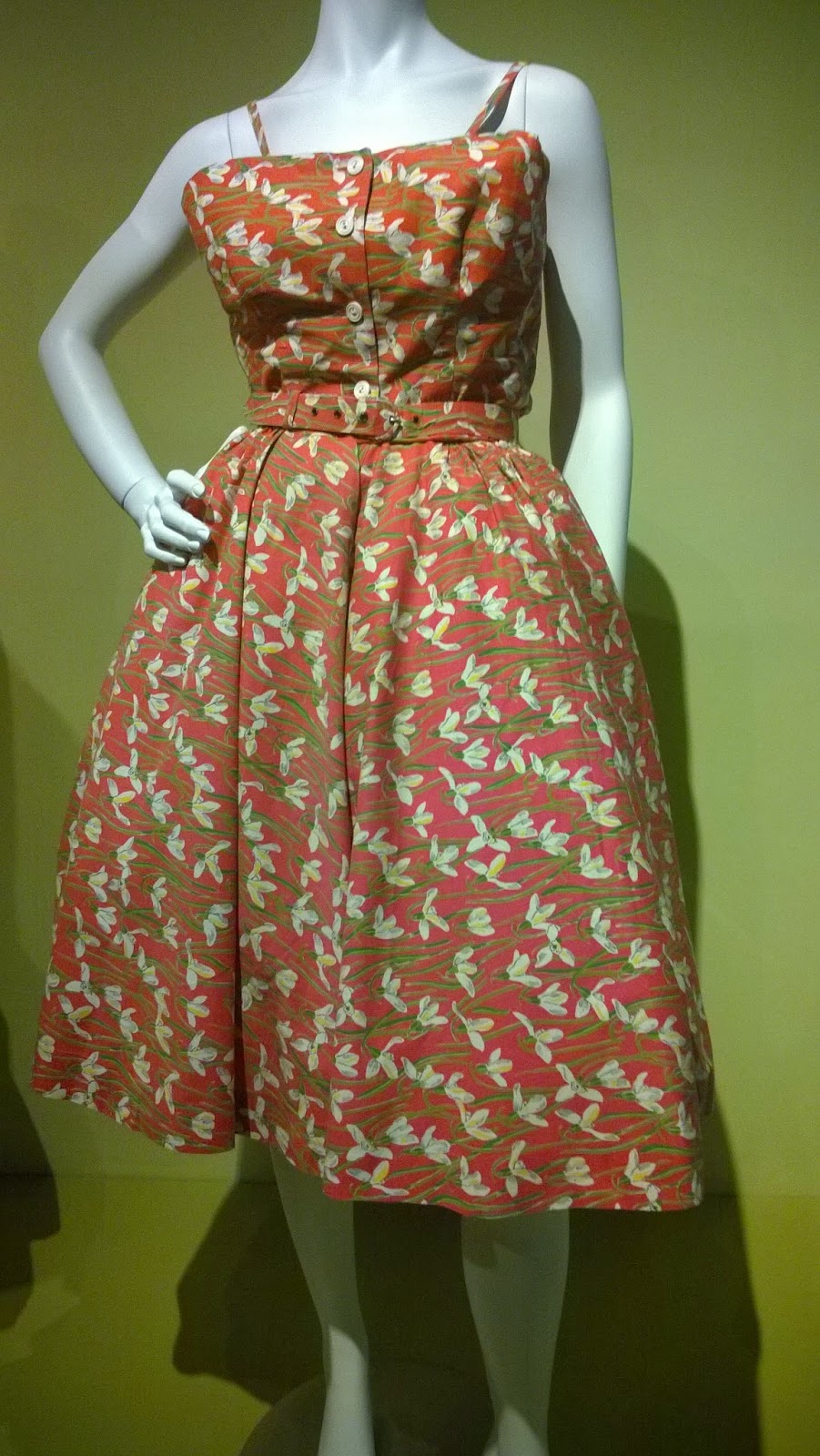Apologies for my lack of posting the past few weeks, I've been beading frantically to make a deadline (and caught the beading bug; I'm still beading! Hopefully I will soon be able to share an example of Victorian cross stitch beading here).
But by the weekend, all the beading had been taken care of, and it was a glorious Saturday. Pip and I took a trip down to Borough Market to sample veggie pie and mash and posh ice cream in the spring sunshine, en route to the Fashion and Textiles Museum to visit the exhibition Artist Textiles. Artist illustrated fashion is another bug I've caught lately (see my last post for proof!), and so I was keen to catch this exhibition, which encompassed artists from Picasso to Warhol. I hoped I would find inspiration for my summer dream project; creating frocks from textiles I've designed myself. And I wasn't disappointed, although I can't say I think much of Picasso as a textiles designer; his designs were too cluttered, clashing, and indistinct for my tastes, with slightly bizarre subject matter (or maybe it's just me who doesn't fancy being bedecked in chickens and plates of fish!)
A contemporary of Picasso's who had rather more success as a textiles designer in my eyes (though is still a little hit and miss) is Dali. His famous melted clocks work rather well as a necktie, his similarly melting telephones create a strikingly modern, hallucinatory silk headscarf, and a simple dress covered in a "flower ballet" is one I would love to slip on.
Marcel Vertes, a Hungarian costume designer and therefore perhaps well suited to designing fashion fabrics, produced some gorgeous, similarly flora-related prints in the 1940s, though I can't help but feel their beauty was somewhat wasted as they were made up into silk headscarfs, which would be worn folded, obscuring the design. That's not to say I wouldn't like to add them to my burgeoning headscarf collection! The smiley sleepy radishes in particular are adorable.
An artist who had rather more success as a textile designer than Picasso and Dali in my view was Andy Warhol. This is perhaps not surprising, as his better-known paintings and screen prints were practically textile designs, produced on a large scale in multiple colourways using popular subject matter. Textile design is perhaps the perfect medium for Warhol's art for mass public consumption. And his designs are simply fun; gloriously 60s colour schemed ice cream sundaes, tumbling watermelons and apples, bugs and butterflies flying all over skirts, trapeze artists leaping over horses; his designs have me wishing textile prints were this whimsical today! They certainly illustrate that the simplest idea is often the best, when executed well. Food for thought for me, if you'll pardon the dreadful pun.
Zandra Rhodes founded the Fashion and Textile Museum in 2003, and so it's fitting that some of her textiles designs are featured in the exhibition, though not merely because of this fact; it would be an oversight to leave Zandra Rhodes out of an exhibition of printed textiles. Rhodes's dress which features in Artists' Textiles was the exhibit that put the biggest smile on my face; a classic late '60s/early '70s Peter Pan collar shift, with a difference; the torso is printed with a luscious pair of lips being touched with a line of lipsticks fanning out into a hand. I considered slipping this little number into my bag for maybe a moment or two.
I felt the piece that made the best use of the repeat quality of print was a textile featuring hundreds of gossips spreading salacious secrets by Virginia Lee Burton. A simple but witty pattern that really explores the possibilities of print. And that's what I intend to do come summertime.




















No comments:
Post a Comment